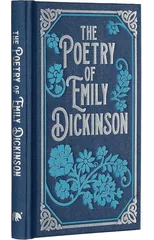When Emily Dickinson died in 1886, having published only a tiny selection of her verse anonymously in journals and newspapers, she left behind a chest containing almost 1,800 poems written on notebooks and loose sheets. Her family members, starting with her sister Lavinia, began editing and compiling them for publication, and one of the most celebrated collections, The Single Hound, was prepared by her niece Martha Dickinson Bianchi and published in 1914. This volume, containing some of Dickinson's most original and poignant pieces, helped cement her reputation as one of America's most important poets. Sparse and experimental, yet accessible and intimate, the compositions included in The Single Hound provide an ideal introduction to Dickinson's genius. ABOUT THE SERIES: The 101 Pages series has been created with the aim of redefining and enriching the classics canon by promoting unjustly neglected works of enduring significance. These texts have been treated with a fresh editorial approach, and are presented in an elegantly designed format.
Emily Dickinson
Emily Dickinson (1830-1886) was an American poet known for her unique and innovative writing style. She wrote nearly 1,800 poems, most of which were discovered after her death. Dickinson's work is characterized by its unconventional punctuation, capitalization, and use of metaphor. She often explored themes of death, love, nature, and spirituality in her poetry.
One of Dickinson's most notable works is "Because I could not stop for Death," a poem that reflects on the nature of mortality and the passing of time. Her contributions to literature include challenging traditional poetic forms and themes, paving the way for modernist poets to come.
Dickinson's impact on the literary genre of poetry is significant, as she is considered one of the most important and influential American poets of the 19th century. Her work continues to be studied and celebrated for its depth, complexity, and originality.











